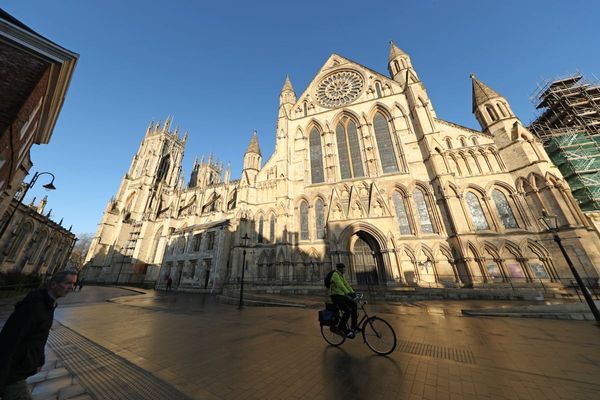
Washington (AFP) - When thousands of protesters descended on Washington in the summer of 2020, many brought with them hand-written posters reading "Black Lives Matter," "Resist" -- hallmark phrases of the historic outpouring of frustration over America's slow-walking progress on racial equality.
Nearly two years later, Nadine Seiler is still working to preserve these pieces of history.
Donning a pink hat and a Wonder Woman necklace, the 56-year-old activist loads her car on a cold February day with more than 300 posters and banners and heads to the Enoch Pratt Library in Baltimore, Maryland.
There, the pieces will be scanned and digitized -- a meticulous process she repeats every six weeks.
Protesters in 2020 had attached the signs to a temporary fence around the White House, which officials had hastily erected in June to keep out a mass of protesters who, like millions around the country and the world, gathered to express their outrage over the killing of George Floyd, a Black man, by a white police officer in Minneapolis, Minnesota.
The 10-foot (3-meter) high metal barriers quickly became a rallying point for the US capital's Black Lives Matter movement as well as an open-air memorial -- with Nadine as its accidental curator.
Memorial guards
"I would see the items fall to the ground or people pulling them out, so I decided along with other people to just neaten up the sidewalk and put the stuff back on the fence," Seiler told AFP.
For nearly a year, she voluntarily repaired the memorial: taping signs back together, reattaching photos of victims of police violence, and retracing anti-Trump slogans that the rain had washed away.
Seiler also regularly struggled with Trump supporters and other members of conservative groups who would come tear down the activists' artwork.
She said a particularly devastating day was October 26, 2020, when "anti-BLM people" came to Washington for the confirmation hearing of Trump's Supreme Court nominee, Amy Coney Barrett.
"They came to the fence and they destroyed it," Seiler recounted."They destroyed almost everything, except probably 10 items."
Along with a handful of other volunteers, Seiler then decided to watch over the memorial day and night, camping out in the nearby square which the city's Democratic mayor had renamed "Black Lives Matter Plaza."
"People felt compelled to come to DC to put their stories on this fence and I felt compelled to protect their voices," she said.
Unemployed and devoting all her time to guarding the memorial, Seiler explains that during that time she struggled to pay her mortgage and almost lost her home in Waldorf, Maryland, near Washington.
"If we hadn't been there, the whole thing would have fallen apart because it wasn't built to be a permanent structure," said Karen Irwin, 46, an activist from New York who also volunteered to protect the memorial.
'Capture the feelings'
Across the United States, other initiatives have sprung up to preserve pieces from the historic social movement.
In Minneapolis, George Floyd's cousin, Paris Stevens, co-founded the "George Floyd Global Memorial" in October 2020 to safeguard the different "offerings" and artwork placed at the intersection where he was killed.
"We have over 3,000 art pieces: billboards, letters, different pieces of art murals," Stevens told AFP.
"It's really important to make sure that we are telling our story the way that we want to tell the story," she said.
Advised by an archivist, Seiler had herself photographed and methodically collected more than a thousand pieces in January 2021, after the inauguration of Joe Biden and a few months before the White House's temporary fence was taken down.
At least 600 items have already been digitized by a laser scanner at the Enoch Pratt Library, which is collaborating on the project with Washington's public library.
"These items tend to be something that would be used for an afternoon or during a specific time of protests and then thrown away," notes Jodi Hoover, the head of digital resources at Enoch Pratt.
"To be able to capture the feelings, the things that people were thinking about at this particular time during an enormous social justice movement, is really amazing," she adds."It does feel like recording history."
Once the digitalization is done, probably by this fall, Seiler and Irwin plan to donate their collection to different associations, museums, or interested businesses.
"We want it seen," says Seiler.
She adds that they have already given some pieces to the city of Tulsa, Oklahoma, the site of a deadly race riot in 1921 which just marked its 100th anniversary.
"It's important to prove to people that history will remember your voice," insists Irwin.







